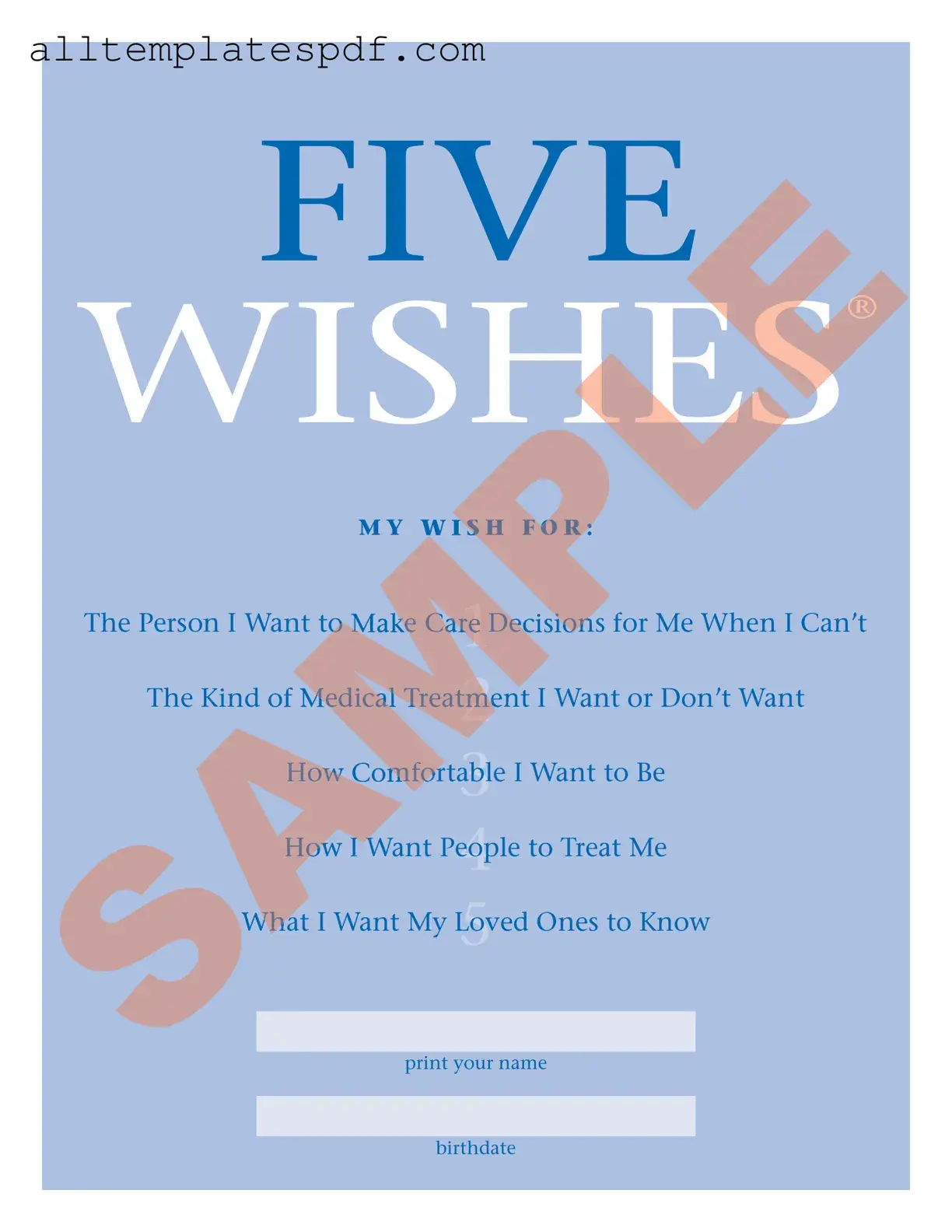Fill Out a Valid 5 Wishes Document Form
The Five Wishes Document is a legal form that allows individuals to express their personal, emotional, and spiritual needs regarding medical treatment and care preferences in the event they become seriously ill. This document empowers individuals to designate a trusted person to make healthcare decisions on their behalf and outlines specific wishes about their care. By completing the Five Wishes form, individuals can ensure their preferences are known and respected, providing peace of mind for themselves and their loved ones.
To take control of your healthcare decisions, fill out the Five Wishes form by clicking the button below.
Open Editor
